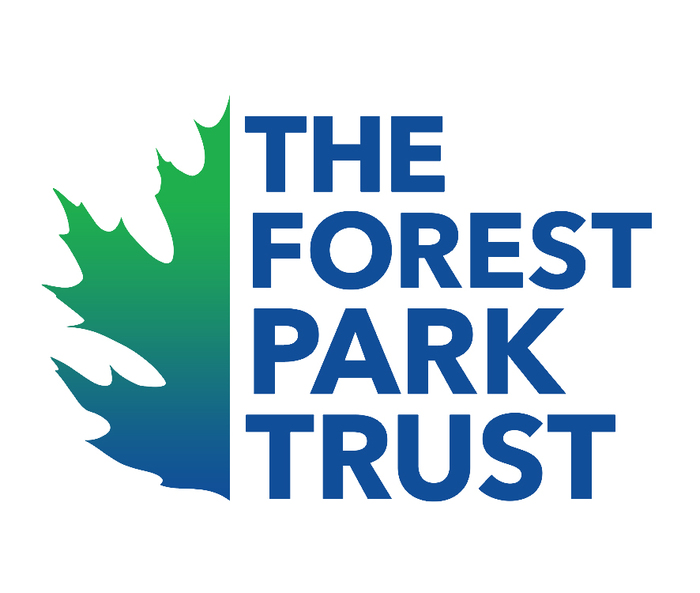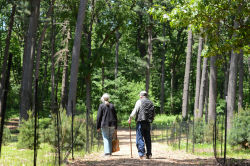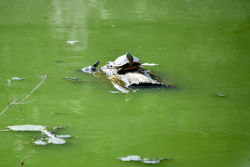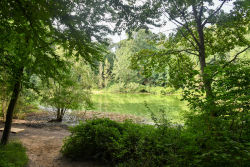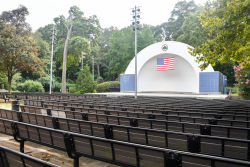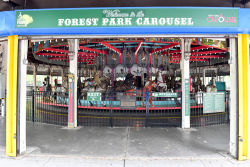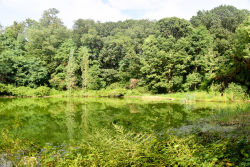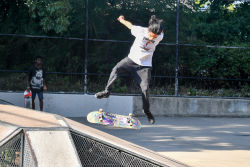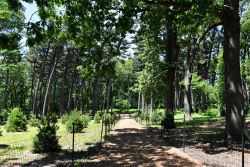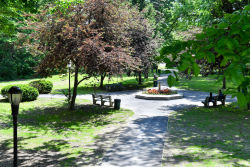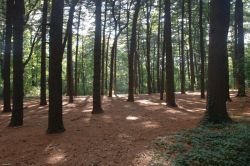Forest Park
Marco Giovanelli Playground
Marco Giovanelli (1913-1980), for whom this playground is aptly named, was devoted to youth athletics. Giovanelli was born in Brooklyn and served in the Pacific during World War II where he was decorated for valor. He was employed at Western Electric until a back injury rendered him unable to work, and he then focused his energies on improving his community. As the State Commander of the Catholic War Veterans, he devoted his time to veterans’ issues on the state and federal level. He also organized baseball and basketball leagues for St. Mary’s Gate of Heaven in nearby Ozone Park, as well as other community organizations. Marco Giovanelli died in 1980.
Marco Giovanelli Playground, located in Forest Park, rests along Park Lane South at Freedom Drive, in the Richmond Hill neighborhood. The photographer Jacob Riis (1849-1914), famous for his book How the Other Half Lives (1890), moved to Richmond Hill in 1886, and spent many of his most productive years living at his house at 84-41 120th Street. The hill in Richmond Hill was created by the glacier that formed Long Island when it melted, leaving behind huge piles of stones and rocks it had dragged across the continent. The area is likely named for Edward Richmond, a landscape architect in the mid-1800s who designed much of the neighborhood. In 1868, a successful banker named Albon P. Man bought the Lefferts and Welling farms, and hired Richmond to lay out the community. Over the next decade, streets, schools, a church and a railroad were built, making the area one of the earliest residential communities on Long Island. Many of the Queen Anne Victorian homes of old Richmond Hill still stand today.
Forest Park is one of the natural treasures of New York City. The Wisconsin glacier molded the land 20,000 years ago and left the Harbor Hill Moraine, creating a series of small hills, known as “knob and kettle” terrain, within Forest Park. The Brooklyn Parks Department sought to create a public park and purchased the first parcel on August 9, 1895, with parcel acquisition continuing until 1898. The parkland was originally known as Brooklyn Forest Park, and was incorporated into Greater New York with Consolidation in 1898. At that time, the Brooklyn Parks Department managed parklands in what is now all of Queens and Brooklyn. It was not until 1911 that an independent Queens Parks Department was established for the borough. Forest Park today offers a wide array of recreational facilities, such as the George Seuffert, Sr., Bandshell, the Carousel, the Bridal Path, tennis courts, playgrounds, and Victory Field. Marco Giovanelli Playground contains play equipment with safety surfacing, drinking fountains, swings for tots, benches, and a flagpole with a yardarm.
Check out your park's Vital Signs
Clean & Safe
Green & Resilient
Empowered & Engaged Users
Share your feedback or learn more about how this park is part of a
Vital Park System

Know Before You Go

Links
Contacts
Forest Park Administrator: (718) 235-0815
Forest Park Golf Course: (718) 296-0999

